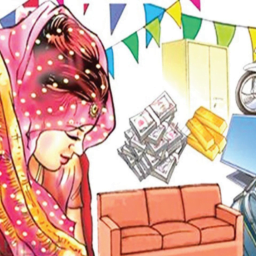INTRODUCTION
Surrogacy has been an extremely debated topic as it falls within the sphere of activities that remained unregulated in the past bringing in a lot of confusion surrounding the topic. The dilemma exists between whether the outlook of the commodification of women is correct which is coupled with the alternate and contrasting idea of women’s right to agency.
SHOULD COMMERCIAL SURROGACY BE BANNED?
Commercial surrogacy is perceived by many like a process of the womb for rent. The ethical argument surrounding this notion is that a human body part is being commodified and commercialized. Moreover, on a deeper look at things, if we draw a parallel of this with organ selling, there are major contradictions that would come up for proponents of surrogacy. If on the one hand selling of organs is not only considered ethically wrong and is, in fact, illegal, how can surrogacy be looked at any differently as was put forth by Mohan Rao as well in his article titled “Why All Non-Altruistic Surrogacy Should Be Banned”.
However, while making such an argument it can be perceived that there is ignorance of the idea of autonomy to choose what to do with one’s body. The problem can be spotted even in the conclusion that Mohan Rao himself presents in his article wherein there is almost a patriarchal notion of wanting to “protect” women and police their bodies, completely stripping them off of their bodily autonomy. This thought also has its roots in the Manusmriti, wherein women were considered as the property of the men and were not allowed to enter into contracts for themselves.
RIGHT TO REPRODUCTIVE AUTONOMY OF THE SURROGATE
The right to reproductive autonomy of a person is a facet of their right to privacy as held in B.K. Parthasarathi v. Govt. of A.P. This implies that one should have autonomy over their bodies, even to be able to decide whether they want to make use of it as a means of earning monetary compensation.
However, as Dasgupta articulated in the article titled “Globalization and transnational surrogacy in India”, there is not much agency that women have in making this decision. They might be forced by their husbands or in-laws to get the money which the surrogates get paid with by the intending parents. Moreover, it can also amount to indirect coercion. Most of the surrogates are usually poor/vulnerable and they may be exploited by the rich and powerful as the state of economic deprivation will lead the poor to undertake these sales due to necessity. This undermines the supposed ‘voluntary’ nature of the process.
But I strongly believe that the deeper issues regarding the process need to be analyzed. Banning commercialized surrogacy would not stop it from going underground causing graver issues of exploitation. Kidney sales are banned in our country except for donations to just close family members, however, they still happen throughout the country with the help of fake certificates. Similarly with regard to the process of surrogacy, even if it is banned, doctors could claim that they are providing infertility treatment to surrogates to get away with the liability of a ban and secretively perform the procedure. Further, there are multiple other ways to get things done illegally making the ban ineffectual in practical terms. Moreover, if there is a stoppage of people willingly engaging in the process for commercial purposes, unwilling people may be forced into it? For example, in close-knit families, daughters-in-law or other women of the family may be guilted/forced into altruistic surrogacy. So the idea of coercion is a likelihood even in altruistic surrogacy.
THE 2015 BAN OF TRANSNATIONAL SURROGACY
Moving a step forward, in my opinion, there is a fundamental problem in the 2015 ban on transnational surrogacy as well. Article 14 of the Constitution provides for equality before the law. This applies to all persons on Indian soil, even foreigners. As discussed at length in the case of Dimapati Sadasiva Reddi v. Osmania University, if there is a classification/distinction, it needs to be on intelligible differentia and such differentia must have a relation to the object sought to be achieved. Nationality should not be a classification when concerned with such an inalienable human right to choose what to do with one’s own body. Assuming that the goal of the 2015 act is to prevent the exploitation of surrogates, it does not in reality serve any purpose as it permits Indians to practice surrogacy. Thus, exploitation would continue despite the provision making its goal ineffectual.
THE SURROGACY (REGULATION) BILL 2019
Lastly, the bigger and most recent problem is with the 2019 Bill which is highly discriminatory towards single persons and the LGBTQ community. The 2019 Transgender Bill and the NALSA judgment depict the mutual inclination of the legislature and judiciary towards recognizing transgender persons’ rights and treating them equally. Thus the surrogacy bill is against the precedent set in NALSA.
By presuming the surrogate as a self-determining agent and still requiring the aspect of marriage, the Bill neglects the sociocultural actualities of patriarchal hierarchies ingrained in Indian society – that, in its understanding of ‘family’, the stressing on ‘traditional’ family not just depicts a restrictive perspective of the heteronormative family and sustains the patriarchal beliefs of gender roles, but is also unsuccessful in acknowledging maternal pluralism in surrogacy arrangements and undermines the modern family. As queer theorists also stress on the issue that there is this idea of heteronormativity entrenched in the society which only accepts the notion of a married heterosexual man and woman, to procreate.
The rationale behind it is also the presupposition of stability in heterosexual marriages to lessen the pressure on children enabling them to have a non-chaotic life. The Divorce rate as of 2017 remains at a low of 1.4% furthering this idea of stability. However, India is a country wherein marriage is like a ‘quintessential and sacred act’ for women, with divorce being seen as faultiness on her part. Thus, because of this stigma, many women remain in discontented marriages out of the scare of social ostracization. Therefore, the assurance of stable home life is also oblique. The idea concerning single parents which assumes that the child may be unhappy/exploited is also a preposterous justification as it is implying that children born from surrogacy require more safeguarding from single parents even when they contain the DNA of the parent commissioning surrogacy over a child who is adopted and might have no biological links to the parent.
Conclusion
There has been an evolution in the adoption laws with changing times. The Juvenile Justice Act permits even single/divorced parents to adopt. This reflects that lawmakers have awareness of the distinctive segregations that persist in terms of the options available to parents. Since both the adoption and surrogacy laws mainly aim at ‘founding a family’, surrogacy law should be drafted in a way to complement adoption law. Laws should adapt and change with changing times and should account for the progression in society. Thus it is important that these laws are more inclusive of transgenders and single parents as well.
Author(s) Name: Anvita Datla (OP Jindal Global University, Sonipat)
















